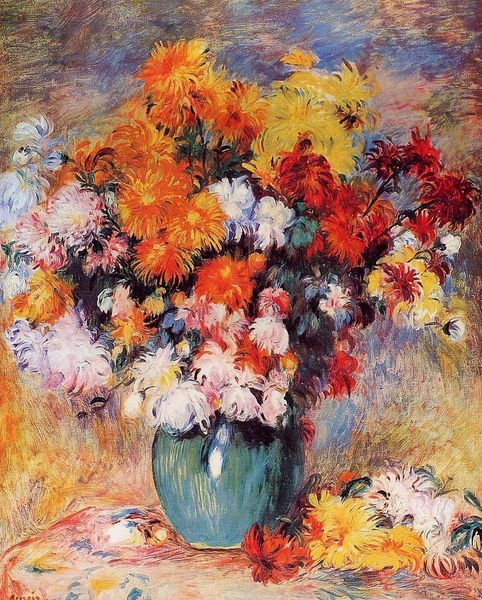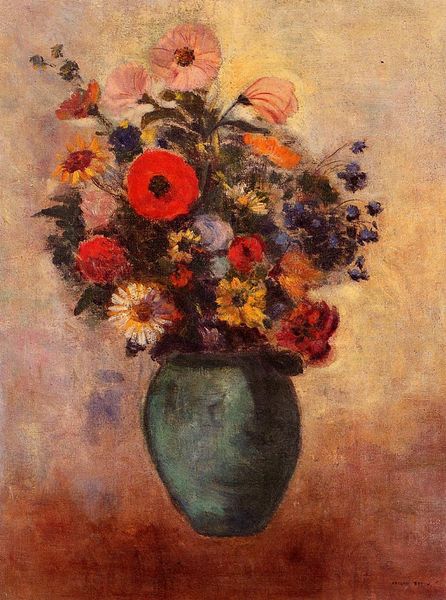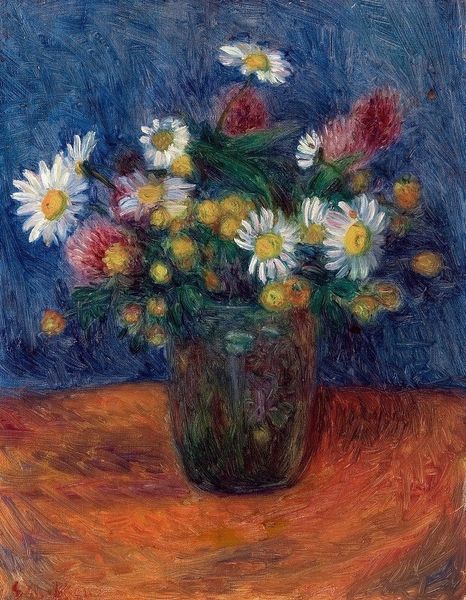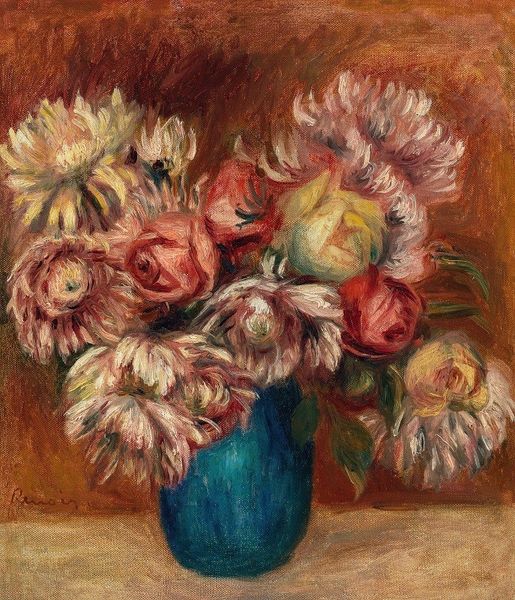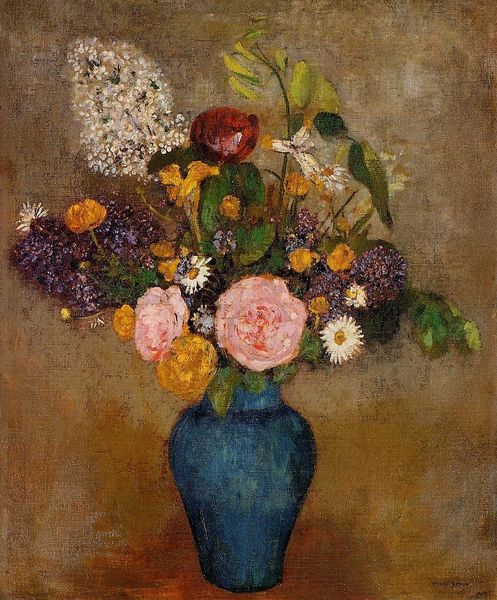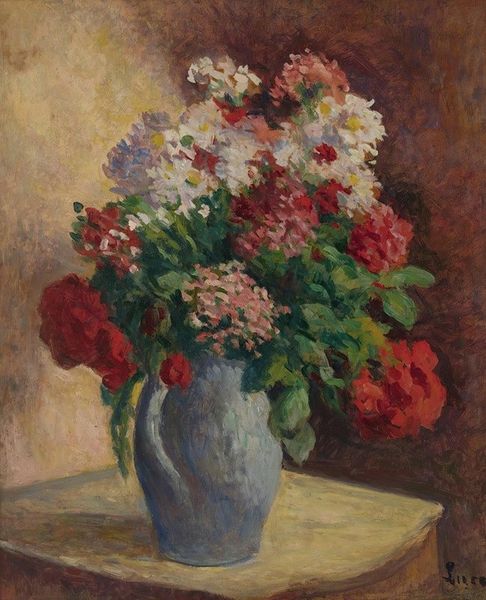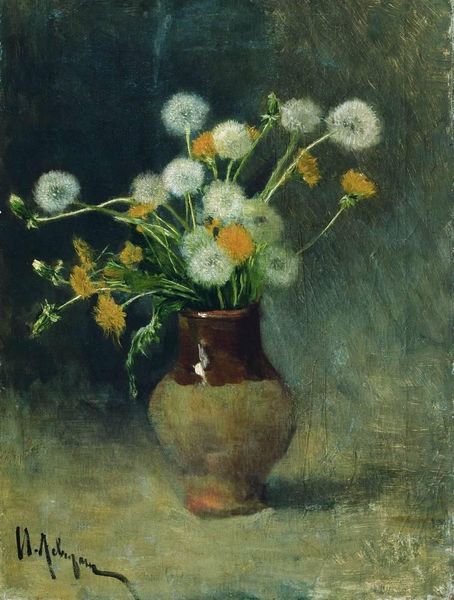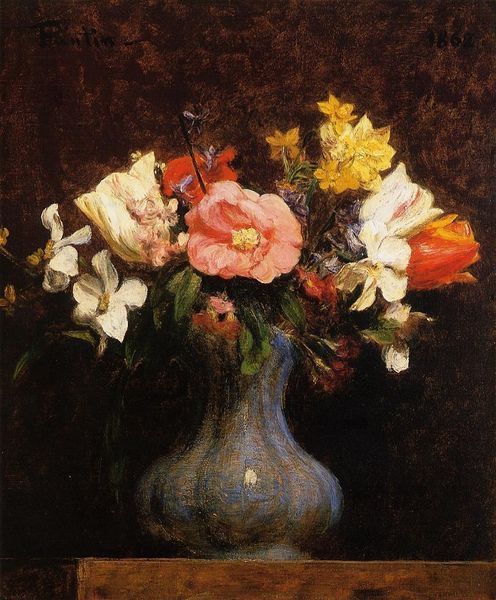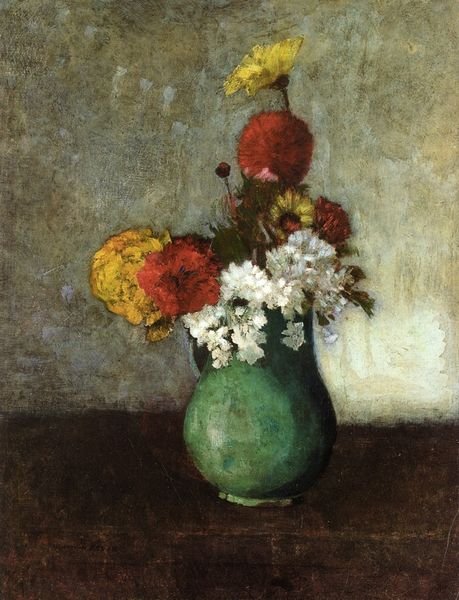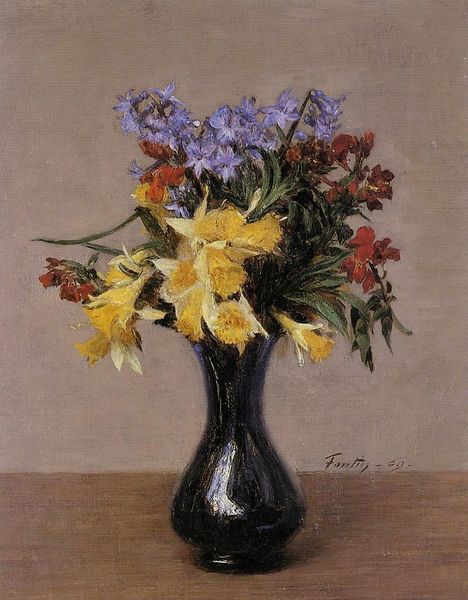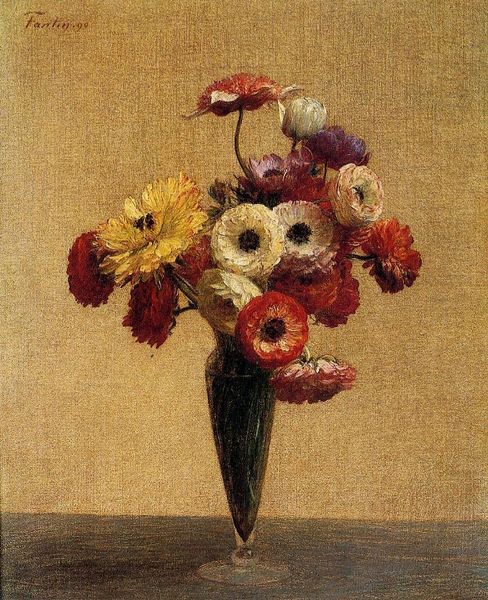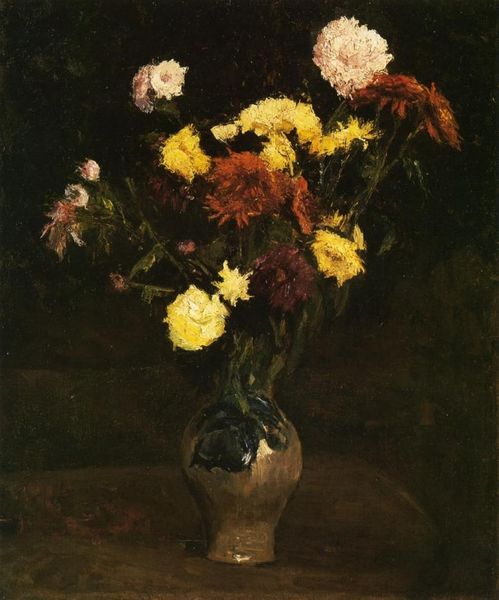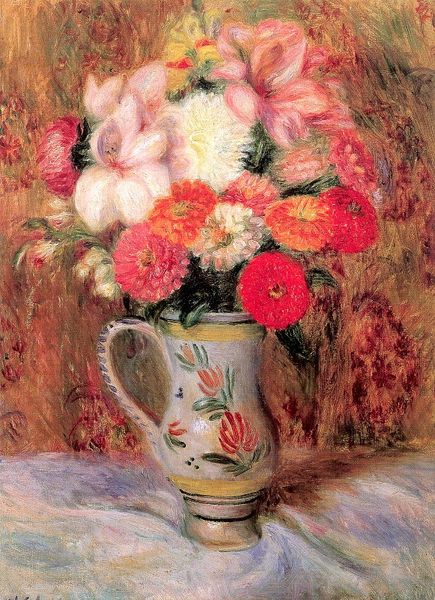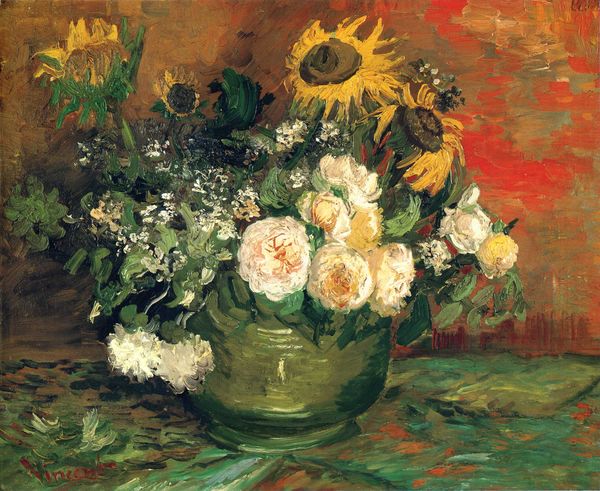
painting, oil-paint
#
painting
#
impressionism
#
oil-paint
#
oil painting
Copyright: Public Domain: Artvee
Editor: Here we have Renoir’s "Bouquet of Chrysanthemums," painted in 1881 using oil paints. It has this lovely, almost soft focus, making it feel gentle and romantic. The blooms seem to burst from the vase. What's your take on it? Curator: The painting excels through Renoir’s masterful handling of light and color, typical of Impressionism. The chrysanthemums, in varying shades, offer a textural interplay against the muted background. Notice how the darker hues of the vase anchor the composition. Consider the brushwork itself—loose, broken strokes that suggest form rather than delineate it precisely. It verges on abstraction. Editor: So you are saying that this loose brushwork moves this piece away from mere representation? Curator: Precisely. Representation is secondary to the interplay of colour and light; how they create an atmosphere. The painting becomes less about a bouquet and more about an optical experience. What compositional elements do you find most striking? Editor: I suppose the way the flowers aren’t evenly distributed, making some areas feel denser than others. And the vase isn't perfectly symmetrical, adding to that impressionistic looseness. Curator: An excellent observation. Renoir prioritized the subjective sensation of seeing over academic precision, focusing instead on a momentary visual impression. Do you think this work embodies the core tenets of Impressionism? Editor: Definitely. Looking closely, I notice so many colors I hadn’t initially seen. The focus is entirely on the sensory experience of observing, which seems like a successful piece to me. Curator: Indeed. Through close observation, one can unlock the underlying formal complexities and intentions behind what appears, at first glance, to be a simple floral arrangement.
Comments
No comments
Be the first to comment and join the conversation on the ultimate creative platform.
